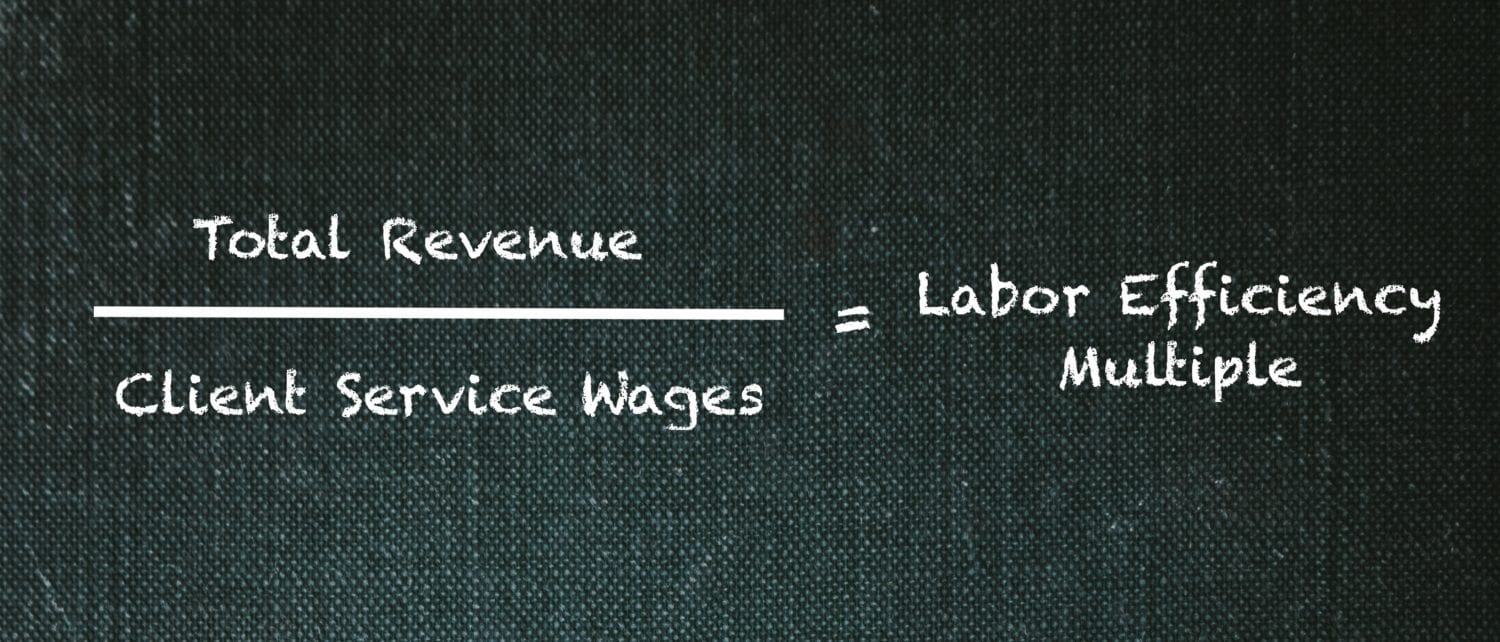The Power of the Labor Value Multiple as a Performance Metric

Of all the metrics governing financial performance, we need to put a spotlight on one in particular: your Labor Value Multiple (LVM), sometimes also referred to as the labor efficiency ratio or revenue multiple. This single metric has so much value as a management tool that we figured we’d take a moment to share some insight into its use as a performance measure.
What is the Labor Value Multiple?
In the simplest terms, your LVM tells you how efficiently your service team is working by measuring the revenue delivered by the team as compared to the cost of employing that team.
Total Revenue / Client Service Wages = Labor Value Multiple
It’s a simple calculation that may be a manager’s dream in what it provides, particularly when applied in financial contexts.
Learning from LVM
How can we apply the LVM calculation? First, determine what your firm’s LVM needs to be in order to achieve your desired profit margins. Then, there are plenty of ways to apply LVM:
- Sales and revenue targets: you know your wage cost. Multiply by LVM, and you know how much revenue you need to sell and deliver.
- Staffing and hiring: you know approximately how much revenue you are billing each month or plan to be billing. Divide that by your target LVM, and that is how much you can spend on your service team wages.
- Worker productivity: at its most basic, LVM offers a top-down view of productivity for each worker and tells you which employees produce the best ROI (return on investment) for a given unit of cost. Be careful with this view, however, as it can be difficult to allocate revenue to employees unless your company bills on a simple hourly model. It also does not capture efficiency and quality measures which are more important over the long term.
- Service pricing: Are your profits consistently coming up short? It’s one thing if a single project or employee underperforms, but if your LVM is in the red across the board, it’s a clear sign that some element of your pricing model is misaligned.
LVM as a Performance Measure
Keep in mind, while LVM is a great performance measure, it has its limitations. For example, the basis of the LVM calculation is measuring revenue output against wages. If service managers are not involved in engagement pricing decisions, it is hard to hold them accountable for LVM. Also, if an individual employee or a broader team have been redirected to work on non-revenue generating, yet still important tasks, the LVM will obviously drop and their non-billable work needs to be recognized.
However, for service organizations LVM is one of the most powerful financial metrics in the company’s arsenal. Make sure your company has the data it needs to generate this calculation, and when in doubt, work with a financial service provider who can verify these numbers before you integrate them into your long-term financial planning.